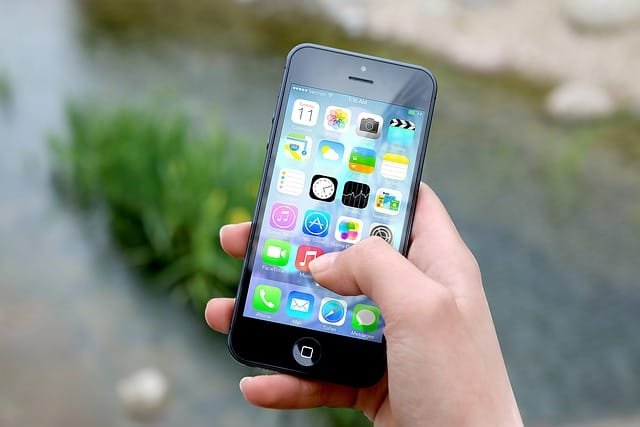Market Overview
The beauty biz is changing fast, with new trends popping up all the time. Getting a grip on these shifts is key for anyone looking to make waves in this industry.
Beauty & Personal Care Market Segments
The market’s split into a few main parts, each doing its own thing for different customer bases. Here’s the skinny:
| Segment | Market Size (2022) | Projected Growth Rate (2023-2028) |
|---|---|---|
| Skincare | $48 billion | 9.5% |
| Haircare | $24 billion | 8.2% |
| Makeup | $19 billion | 6.6% |
| Hygiene | $15 billion | 7.0% |
Looks like skincare’s winning the race, but haircare and hygiene aren’t too far behind. With everyone’s eyes on self-care, brands need to keep things fresh and flexible to get folks excited about new products.
Consumer Behavior Trends
Nailing down what makes buyers tick is a big deal in personal care. Here’s what’s shaping their choices these days:
Online vs. In-Store Shopping: Online shopping is all the rage, especially with the younger crowd. The ability to check out specs and reviews right from your couch is a big draw (The Balance). That said, older generations still dig walking into stores for that personal touch.
Brand Loyalty and Personalization: These days, people stick to brands that line up with their own beliefs, especially when it comes to being green and playing fair. Personal marketing moves, like ads that hit home and custom-made product leads, keep people interested.
Sustainability Focus: A big shift is happening where folks are picking brands that care about the planet. Companies going green and being upfront about it are scoring with shoppers who care about the environment.
For a deeper dive into what’s up in the personal care scene, check out personal care industry trends and personal care market analysis. These spots are great for salon owners, spa pros, and beauty brand marketers trying to keep up.
Growth Trends
In the buzzing world of personal care, certain trends are carving out the future of consumer interests and brand strategies. Folks are diving into clean beauty options, giving new life to the men’s care market, and taking a shine to nature-inspired beauty delights.
Clean Beauty Products
Clean beauty bore witness to a boom, especially during the Covid era, as people pivoted from colorful cosmetics to wholesome skincare. Ethical concerns—think animal rights and saving the planet—are front and center for shoppers. The vibe’s shifting from just pretty faces to skincare that’s kind and guilt-free. More peeps are hunting for brands that jive with their eco-conscious values, backing up their choices with numbers from Statista.
| Stat Stuff | Numbers that Matter |
|---|---|
| Eco-aware consumers | 65% |
| Extra bucks for green goods | 55% |
| Loyal to “clean” stuff | 68% |
| All for “natural and organic” tags | 59% |
As brains get bigger on these products, clean beauty’s slated to be the Beauty & Personal Care star player. Take Aesop, for instance, which muscled through tough times with a 40% growth spurt between 2020 and 2021 (kudos, Statista).
Men’s Beauty Market Growth
Guys are stepping up and leaning hard into a refined grooming game. More brands are extending a warm welcome to this crowd, who’ve long waited for some personal care TLC. This interest spans everything from skincare to snazzy scents, showing off how the guys are busting through old stereotypes.
Lately, the market has graduated from just the basics to swanky products. As more men shake hands with personal care, this segment’s future looks pretty bright.
Natural Beauty Market Growth
Wanna talk about nature’s magic? The natural beauty biz is packing a punch, with financial forecasts showing it could skyrocket to $59 billion by 2031. There’s a growing appetite for goodies that pack the purity of nature (Exploding Topics).
With folks becoming ingredient-savvy, the clamor for natural substitutes is on the rise. Brands waving the flag for transparency and sustainability are set to rake in rewards in this growing garden of the market. Knowing the ins and outs of personal care industry trends helps beauty marketers walk the walk, staying relatable to what people truly value.
These rising trends are a call to arms for savvy personal care marketing strategies that align with what makes consumers tick today.
Industry Insights
Diving into the nitty-gritty of personal care gives salon owners, spa pros, and cosmetic geeks a leg up when it comes to making bucks and staying ahead of the curve.
Revenue Figures & Market Projections
Beauty isn’t just skin deep; it’s a cash cow. The global beauty biz is on a tear, poised to hit $579.22 billion this year, stepping up from $528.6 billion last year, according to a hot take from Helplama. With the buzz around natural and organic goodies, we’re eyeballing a leap to about $590.9 billion by 2025 and shooting past $101 billion by 2027 (Exploding Topics).
| Year | Market Size (USD) |
|---|---|
| 2022 | 528.6 billion |
| 2023 | 579.22 billion |
| 2025 | 590.9 billion |
| 2027 | >101 billion |
Top Players in the Beauty Industry
Who’s boss in beauty? Well, you’ve got L’Oreal sitting pretty with sales hitting $40.31 billion in 2022. Unilever came in with $25.11 billion, not too shabby either, then there’s The Estee Lauder cashing in at $16.4 billion (Helplama). It’s a dog-eat-dog world out there, folks.
| Company | Revenue (USD) |
|---|---|
| L’Oreal | 40.31 billion |
| Unilever | 25.11 billion |
| The Estee Lauder | 16.4 billion |
Mergers & Acquisitions
Companies love a good mash-up, snapping up startups or seasoned players to bulk up their portfolios and keep things fresh. This isn’t just a game of dollars and cents—it’s all about riding the wave of clean and green beauty trends. These mergers are the talk of the town, positioning firms to keep up with fickle customer tastes.
Curious for more? Check out our takes on personal care industry trends and dig into personal care market analysis. Peeling back these layers means salon powerhouses, spa stars, and marketing maestros can whip up strategies that stick.
Consumer Buying Behavior
Grasping what’s behind consumer buying behavior is like discovering the secret sauce for salon owners, spa managers, and marketers of beauty brands. It’s all about the social stuff, why people buy, and making it all feel personal.
Influence of Social Class
Okay, let’s talk social class and how it steers what folks throw their money at. It’s all about where you sit on the social scale — think cash, jobs, and schooling. Over in the US, they’ve got this neat little system where social class slots into five groups: the fancy-pants upper class, the comfortable upper-middle, the in-betweener lower-middle, the working folk, and those scraping by OpenStax.
Here’s a lowdown on how each social group tends to shop:
| Social Class | Buying Behavior Traits |
|---|---|
| Upper Class | Splurges on top-shelf stuff |
| Upper-Middle Class | Cares about high-end quality and brand names |
| Lower-Middle Class | Watches the wallet, balancing cost with quality |
| Working Class | Sticks to must-haves and budget options |
| Economically Disadvantaged | Pinches pennies, basic-needs first |
This kind of lineup gives marketers a fighting chance to connect with each crowd in a way that sticks, boosting customer satisfaction and loyalty. Need more trade secrets? Check out personal care industry trends.
Gender & Shopping Motives
Gender plays a huge role in why and how people shop. Studies suggest men are all about practicality and often take a no-frills, straight-to-the-point approach, focusing on getting the job done without breaking the bank. Women, on the other hand, shop with heart — it’s about emotional ties and experiences OpenStax.
Here’s a snapshot of what drives each gender to shop:
| Gender | Shopping Motives |
|---|---|
| Male | Efficiency, practicality, and good deals |
| Female | Emotional pull, sticking with beloved brands, peer influence |
Being clued up on these vibes is key to crafting marketing that hits the mark. Brands could think about ads that tug on heartstrings or lay out the down-to-earth benefits, all depending on the audience.
Personalization & Product Recommendations
Tailoring experiences is now the name of the game for personal care brands. Folks nowadays want their shopping journey to be as unique as their playlists. Get this right, and you’re looking at a bump in sales figures.
What makes personalization work:
- Custom Messages: Brands that send out personalized emails or offer suggestions based on past shopping get more folks to hit “buy.”
- Unique Products: Matching products and services with a customer’s taste keeps them coming back for more.
- Feedback Channels: Asking for customer input to tweak product recommendations sweetens the whole shopping deal.
Smart personalized marketing not only keeps customers but also turns them into loyal fans. For a deeper dive, swing over to personal care marketing strategies.
Getting a grip on these elements lets businesses master consumer choices in the personal care scene, making for smarter decisions and sharper marketing plans.
Retail Strategies
Retail strategies can make or break how effectively personal care businesses connect with their customers. This section is all about breaking down online and in-store sales, how personalized service makes a difference, and the cool new ways we’re paying for stuff with our phones.
Online vs. Brick-and-Mortar Sales
Let’s talk about the key differences between browsing online and visiting a physical store. Shopping online is all about adding things to a virtual cart from the comfort of your sofa. Brick-and-mortar, on the other hand, is about stepping into a shop, smelling the fresh-baked goods, and chatting with the friendly cashier.
| Feature | E-commerce | Brick-and-Mortar |
|---|---|---|
| Store Presence | Nope | Yep |
| Buying Experience | Click and wait | Grab and go |
| Customer Interaction | Chat windows | Heartfelt chats |
| Helpfulness | Meh | Super helpful |
Online shopping is a breeze and usually offers loads of choices. But there’s something special about picking up that new shampoo bottle and chatting with your trusty in-store advisor.
Personalized Customer Service
When you’re shopping in person, having a friendly face to answer your questions and dish out advice can turn a moment of uncertainty into a sale. Helpful shop assistants can make you feel like a VIP, resolving any snag right then and there.
Training staff to deliver this kind of personalized experience means more customers sticking around and even coming back. For tips on ramping up your customer service game, check out our guide on personal care marketing strategies.
Mobile Payment Innovations
Who wants to carry cash these days? Thanks to tech, paying through your phone is more popular than ever, even in physical stores. The cash might be back, but options like Apple Pay are here to stay. Variety in payment methods lets people choose their favorite way to pay, smoothing the shopping experience.
Offering all sorts of payment options not only makes it convenient but also keeps customers coming back. For more insight into how payment systems can boost your business, read our piece on personal care product launches.
Understanding these key retail strategies—blending the perks of online and in-store shopping, making customers feel special, and using next-gen payment tech—will help shops, spas, and cosmetic brands keep their customers happy and coming back for more.
Beauty Sector Growth
Beauty is growing and changing—a bit like your makeup bag. Skincare and makeup choices are shifting alongside an increased focus on keeping things squeaky clean. If you’re running a salon, managing a spa, or marketing cosmetic brands, you need to catch up with what’s in demand to keep customers happy and coming back.
Skincare Market Trends
Lately, skincare products are hotter than a summer day. Folks are getting picky, wanting hydration, anti-aging magic, and stuff that won’t irritate sensitive skin. The surge in love for things like non-acne facial moisturizers, facial serums, and those handy acne patches? Yep, that’s the proof. People are gravitating towards brands that talk science and ingredients like niacinamide and retinol—those are the rock stars now (Numerator).
| Skincare Category | Focus Areas |
|---|---|
| Non-Acne Facial Moisturizers | Hydration |
| Facial Serums | Anti-aging |
| Acne & Blemish Patches | Skin Sensitivity |
Makeup Consumer Preferences
In the makeup aisle, the buzz is on products picking out parts of your face, like lipstick and foundation, over those bulky sets. This shift is all about giving folks the freedom to be unique and let personality sparkle. 58% of makeup lovers say makeup gives them a confidence boost, with Gen Z leading the charge, using makeup as their personal billboard. There’s also a rising craving for goodies that are kind to skin, packed with clean ingredients, and come with bonus benefits like sun protection (Numerator).
| Makeup Focus | Consumer Preference |
|---|---|
| Lip Products | Confidence |
| Foundation Products | Customization |
| Clean Ingredients | Skincare Benefits |
Hygiene Focus in Beauty Industry
Health concerns still linger, putting cleanliness on everyone’s radar in the beauty biz. Shoppers aren’t just after flawless looks; they want clean and safe products too. This new behavior shows how crucial it is to have spotless marketing and product ops. Brands that harp on their hygiene points will probably see a trust bump and customers sticking around longer.
For more on the buzz in beauty, check out our scoop on personal care industry trends and personal care market analysis. Staying in the loop with trends can sharpen personal care marketing strategies and nail those personal care product launches.
Biggest Players
Procter & Gamble’s Brand Success
Procter & Gamble (P&G) is like the star player in the personal care league. You know, the one that everyone talks about. They’ve got a lineup full of popular brands that your aunt’s probably obsessed with. What makes them tick? They’ve found the sweet spot where business meets the tree-hugging crowd. With over 65% of consumers hunting for eco-friendly options, they’re not just selling soaps and shampoos—they’re selling peace of mind. More than half of us would shell out extra cash for products that give a nod to Mother Nature. Cha-ching, right? Their move towards sustainability isn’t just smart; it’s like having your cake and recycling it, too! (Exploding Topics).
Now, fast forward to 2031, and you can hear the cash registers saying “cha-ching” to the tune of $59 billion. Yes, billion with a ‘B’, all thanks to natural beauty and cosmetics. P&G is planting seeds for this future, sticking their neck out in this green and clean niche. It’s about surfing the wave, not swimming against it. Check out more on these savvy moves in personal care marketing strategies.
Customer Focus on Makeup
Roll out the red carpet because makeup is taking center stage in personal care. Here’s the deal, personal care brands must be mind-readers—or almost. They gotta dive into what makes their buyers tick. We’re talking about personality and self-image running the show when it comes to spending those hard-earned dollars (OpenStax).
Brands that get it, get you. They’re like that friend who knows your favorite drink and serves it up before you ask. By leaning into personalized marketing, they’re dialing up the loyalty vibes. Capture hearts and wallets with some genius personal care product advertising, and you’ve got yourself not just customers, but fans.
Key Insights from Consumer Purchasing Data
Alright, so let’s talk numbers, without the headache. Sizing up consumer cash-out patterns is basically like shaking a Magic 8-ball for brand strategies. Brands can take a good, long look at what sells to whip up products that fly off the shelves, not gather dust. And here’s a cool nugget: mobile payments are makin’ waves in-store, keeping up with their online counterparts (RetailNext).
Swipe, tap, whoosh – simple payments can keep folks smiling as they stroll through aisles. It’s high-tech convenience without losing that personal touch (The Balance). Using this know-how, brands can walk the walk in customer satisfaction, creating experiences that consumers love. Want in on the secrets of nailing product placement? Hit up personal care product positioning for the inside scoop.




















